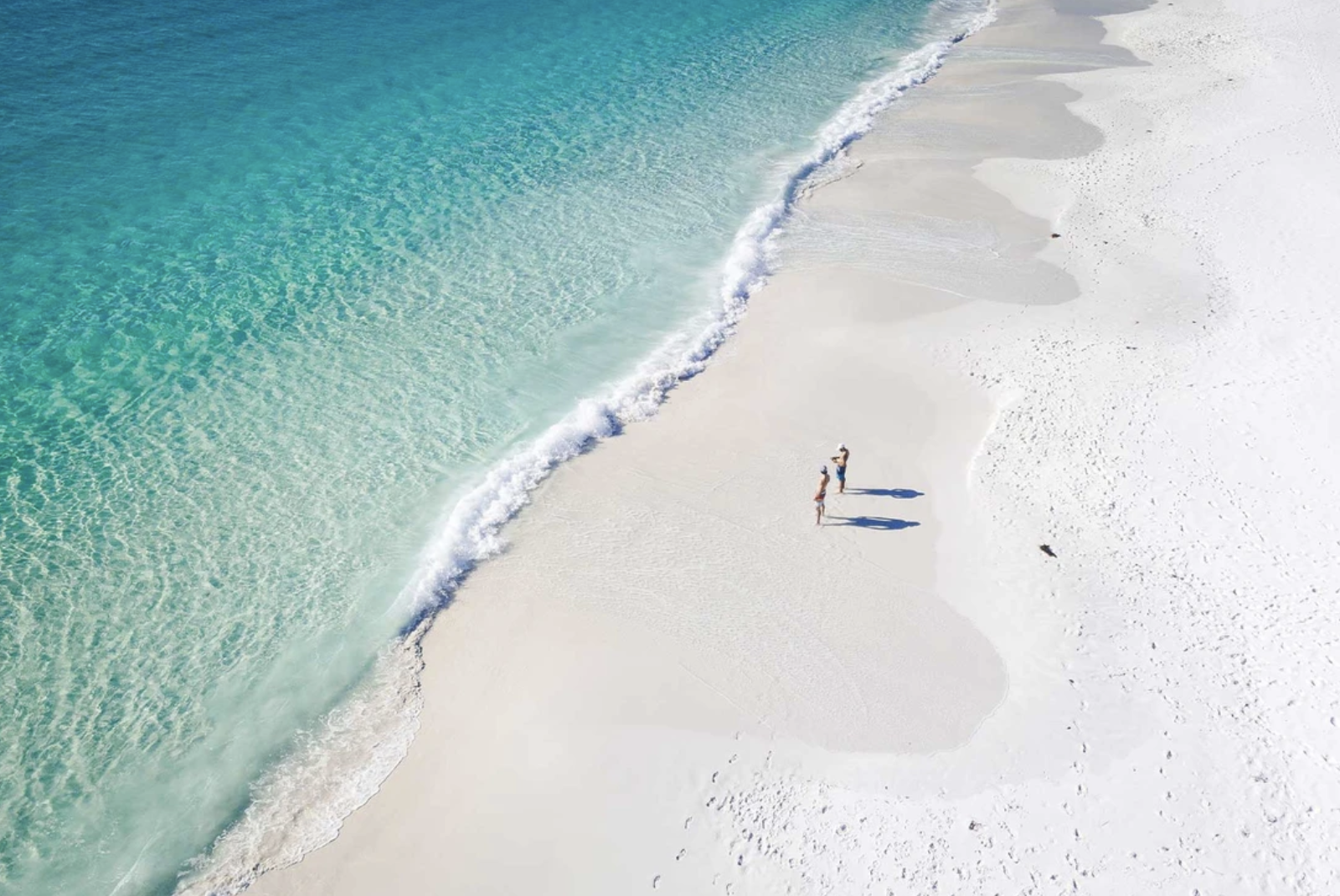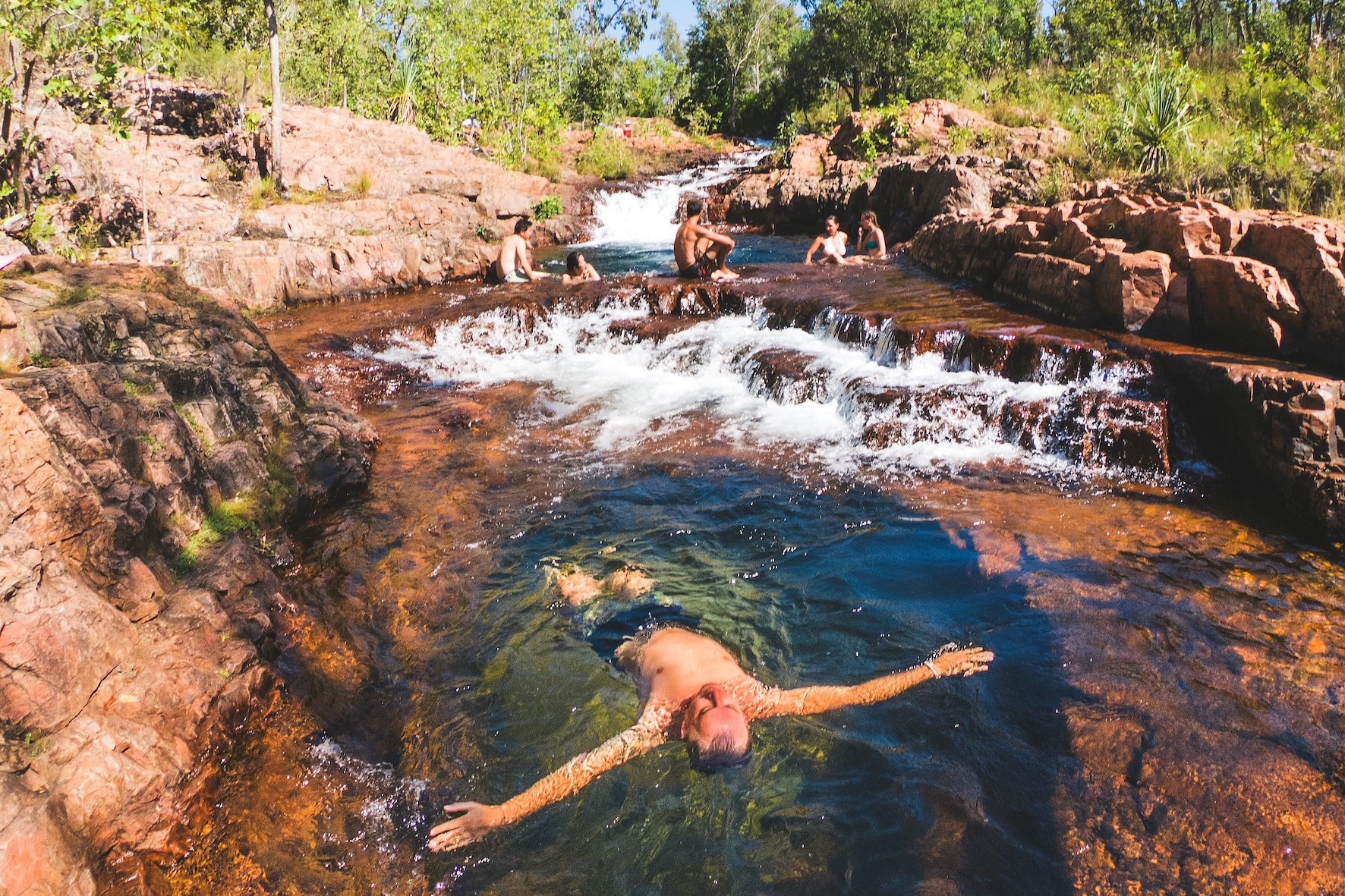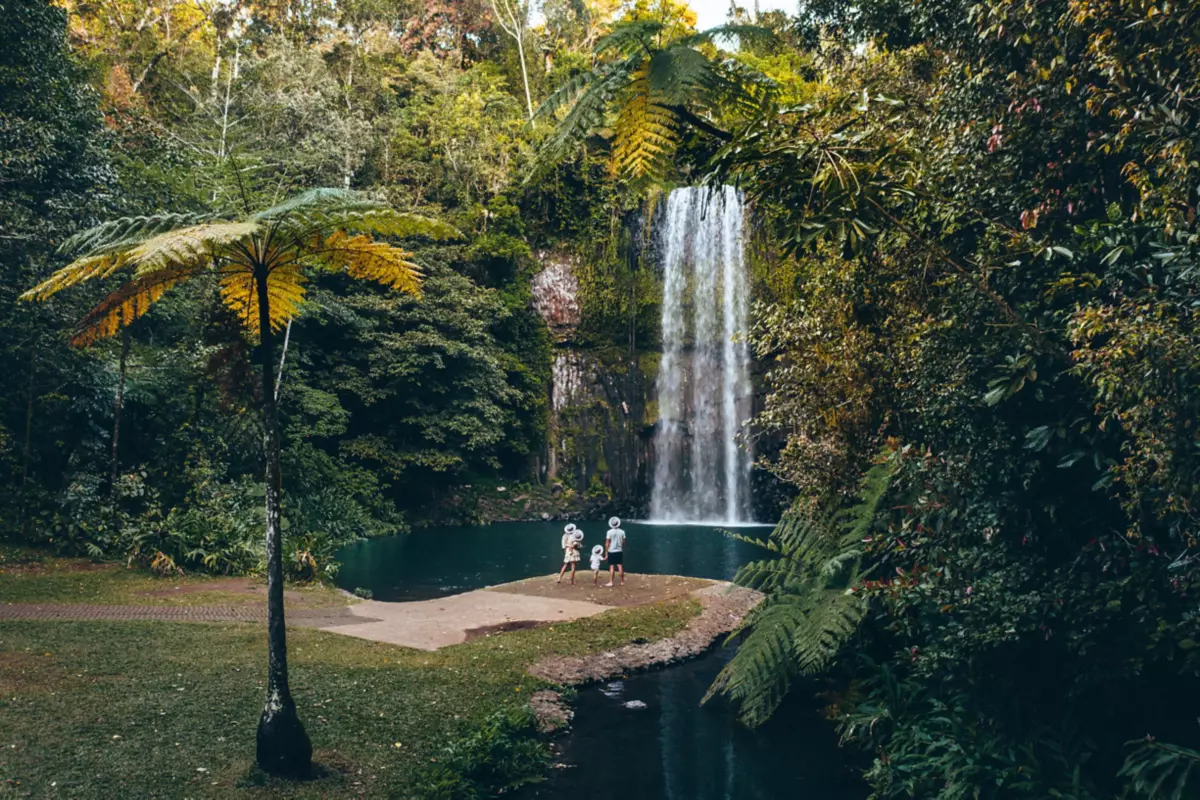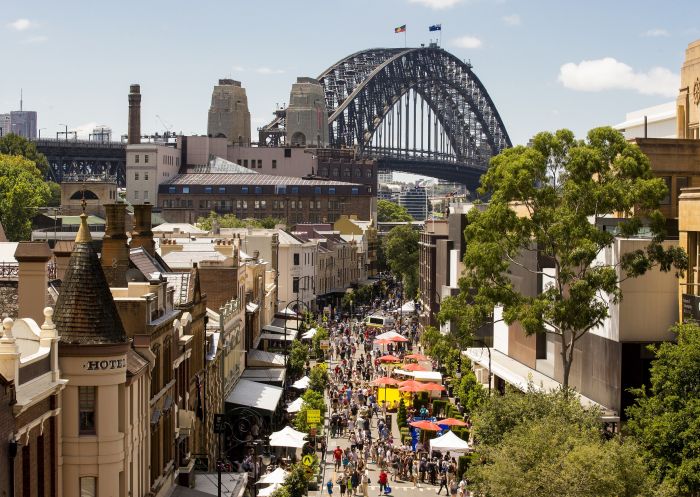Cairns is the tropical jewel of Far North Queensland with pristine beaches and warm waters, but if you’re planning to visit, you might be asking “When is stinger season in Cairns?”. It’s a good idea to be aware of stinger season and it’s absolutely vital for staying safe while enjoying the region’s stunning marine environment.
Stinger season refers to the period when the waters around Cairns are most active with jellyfish; specifically, the box jellyfish (Chironex fleckeri) and Irukandji jellyfish (Carukia barnesi) species, which are both highly venomous and can pose serious risks to swimmers.
Box jellyfish are known for their cubic shape and long tentacles that deliver painful and potentially life-threatening stings. Irukandji jellyfish are smaller but equally dangerous, with stings that can cause severe symptoms, including intense pain and cardiac complications.
When is Stinger Season in Cairns?
Stinger season usually runs from November to May (which generally coincides with the region’s wet season) due to the warmer water temperatures creating ideal conditions for jellyfish to thrive. The risks are definitely highest during these months, but it’s important to be cautious even at the beginning and end of the season, as stingers are sometimes found outside these periods.
Where Are Stingers Found?
Stingers are usually found in coastal waters in calm, shallow areas such as beaches and estuaries. They’re also sometimes found near river mouths, as some species prefer brackish water conditions. Offshore waters – like those around the Great Barrier Reef – are generally considered lower risk but not completely free from stingers, so it’s always important to be stingers safe, no matter where you’re swimming.
How to Stay Safe During Stinger Season
Despite the risks, it’s absolutely possible to enjoy Cairns’ beautiful beaches and marine activities safely by following a few precautions, such as:
- Swimming within stinger nets – Many beaches in Cairns and surrounding areas install stinger nets during the season. These enclosures act as a barrier, significantly reducing the risk of encountering jellyfish.
- Wearing protective clothing – Stinger suits (which are readily available around Cairns) are made of lightweight, lycra-like material and provide an additional layer of protection. They are highly recommended for snorkelling, diving, or swimming in unprotected waters.
- Heeding warning signs – Most beaches display signs indicating stinger risk levels. Always pay attention to these notices and follow local advice.
- Avoid swimming in risky areas – Stay out of the water in unpatrolled locations, estuaries and river mouths, where the risk of stingers is higher. There are plenty of stingers-free swimming locations around Cairns if you’re looking to cool off after a hot day, like the Cairns Esplanade Lagoon.
Emergency Response
If you do get stung, seek medical help immediately, even if you believe it’s a minor sting. Vinegar (which is available at most areas where stingers are) can be applied to jellyfish stings to neutralise venom, but fresh water should be avoided as it can cause more of the venom to fire off.
Prompt treatment is critical, so call emergency services or visit a hospital as soon as possible. Thankfully, most people recover from minor stings and the emergency services and beach patrols in Cairns are highly trained to deal with stinger events, so as long as you follow precautions and try to stick to tourist activities that are supervised, you should have no issues. Check out our Cairns Tours page for some great ideas!
FAQs
When exactly is stinger season in Cairns?
Stinger season typically runs from November to May. This is the region’s wet season when water temperatures are warmer, creating ideal conditions for jellyfish to thrive.
Can I swim in Cairns during stinger season?
Yes, you definitely can still swim during stinger season. You just need to take precautions, such as swimming in stinger-netted areas, wearing stinger suits and following local safety guidelines.
Are stinger nets 100% effective?
While stinger nets reduce the risk of jellyfish encounters by quite a bit, they are not 100% impenetrable. You should still wear a stinger suit for added protection during stinger season, especially if snorkelling or diving.
Are stingers found on the Great Barrier Reef?
The risk of stingers is much lower in the offshore waters of the Great Barrier Reef compared to coastal beaches. There is still a small chance of encountering jellyfish though, so wearing a stinger suit is recommended when snorkelling or diving.
What should I do if I get stung by a jellyfish?
If you’re stung, apply vinegar (available at most beaches and public swimming areas) to the stung area as soon as possible to neutralise venom. Don’t rinse with fresh water, as it can worsen the sting. Seek medical attention urgently, even if your symptoms seem mild.
Can I avoid stinger season?
If you want to avoid stinger season altogether, you can visit Cairns between June and October, which is outside the peak jellyfish period. This is also the dry season, so you’ll get cooler temperatures and lower humidity as a bonus.
Where can I swim safely in Cairns if I’m worried about stingers?
The Cairns Esplanade Lagoon is a great stinger-free swimming location. There’s also other public swimming pools and resorts in Cairns that provide safe, monitored environments for cooling off during stinger season.









